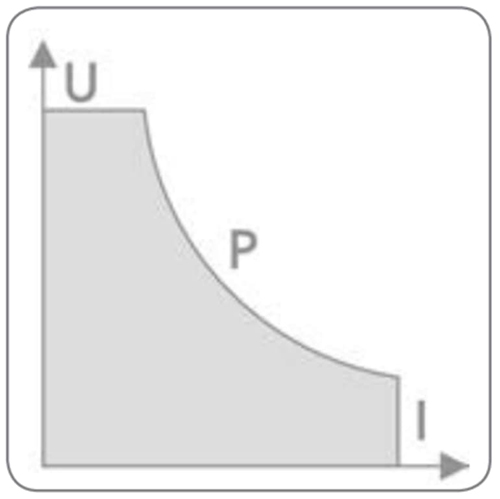EA Elektro-Automatik EA-PS 3040-20 C DC Power Supply, Autoranging, Single Output, 100-240AC, 40VDC, 20ADC
Couldn't load pickup availability

Ask an expert!

EA Elektro-Automatik
EA Elektro Automatik is a German manufacturer of programmable power supplies and electronic loads designed for efficiency testing, R&D, and industrial automation.
EA Elektro-Automatik EA-PS 3040-20 C DC Laboratory Power Supply
Power: 320 W
Voltage: 40 V
Current: 20 A
Color display for values, status, and notifications
Flexible, power-regulated output stage
LabView Vls and control software for Windows
Desktop (table) housing. Carrying handle
Various protections (OVP, OCP, OPP, OT)
Remote sensing
Optional, galvanically isolated interfaces (USB, USB + Analog, USB + Ethernet)
The Elektro Automatik EA-PS 3000 C device offers the user a compact desktop power supply for use in many applications where small voltages, currents and powers are required. The EA-PS 3040-10 C model provides an output power rating of 0...160 W with 0...40 V output voltage and 0...10 A output current. The small enclosure dimensions, the intuitive control panel with the color display and the frontally accessible DC output facilitate setup, connection and handling on the place.
Besides standard features of power supplies, this device offers some additional functions to simplify handling and to save time. Apart from set value adjustment with knobs, the user can also quickly configure several protection thresholds and call user profiles.
AC supply
The equipment uses an active Power Factor Correction (short: PFC), enabling worldwide use on a mains input from 90 V AC up to 264 V AC.
DC output
DC output voltages between 0...40 V and 0...200 V, output currents between 0...2 A and 0...40 A and output power ratings between 0...160 W and 0...640 W are available. Current, voltage and power can thus be adjusted continuously between 0% and 100%, no matter if manually or remotely controlled (analog or digital). The output terminals are located on the front side of the devices.
Autoranging power stage
This model is equipped with a flexible auto-ranging output stage which provides a higher output voltage at lower output current, or a higher output current at lower output voltage, always limited to the adjustable power set value or the rated power. Therefore, a wide range of applications can already be covered by the use of just one unit.
Remote sensing
The standard sensing input can be connected directly to the load in order to compensate voltage drops along with the cables. If the sensing input is connected to the load, the power supply will detect this and adjust the output voltage automatically to ensure the accurate required voltage is available at the load.
Protective features
For the protection of the equipment connected, it is possible to set an overvoltage protection threshold (OVP), as well as one for overcurrent (OCP) and overpower (OPP). As soon as one of these thresholds is reached for any reason, the DC output will be immediately shut off and a status signal will be generated on the display and via the interfaces. There is furthermore overtemperature protection, which will shut off the DC output if the device overheats.

Handling (HMI)
Manual operation is done with a color display, two rotary knobs and six pushbuttons. The large display shows all relevant set values and actual values at a glance. The whole setup is also done with the human-machine interface. The display is multilingual (German, English, Russian, Chinese).
Remote control & connectivity
For remote control, there are three types of interface cards optionally available which can be quickly and easily installed by the user on the location:
USB
USB + Ethernet
USB + Analog
When using the digital interfaces (USB, Ethernet), Windows users can profit from the free software “EA Power Control”. It offers a feature called “Sequencing”, where the device is controlled through a semi-automatic table in CSV format. This table represents a simple test procedure and can be created and edited in MS Excel or other CSV editors and then be imported into the software tool. This software also allows for the control of up to 20 units at once with an optional feature called “Multi Control” (licensed, not free of charge)
Software and programming
For remote control from a Windows PC, there is a software EA Power Control included with the device. It can be used with multiple different or identical models of this series in order to monitor and control the units. The software furthermore includes a feature to record data and to control the units by semi-automatic table processing.
For even more sophisticated, customer-specific applications there is complete programming documentation and also LabView VIs for direct implementation available.
All models of series EA-PS 3000 C support the common command language SCPI and the ModBus RTU protocol via Ethernet and USB.




